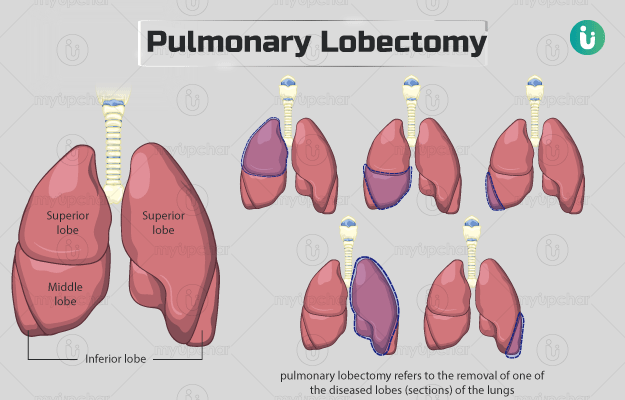Summary
A pulmonary lobectomy refers to the removal of one of the diseased lobes (sections) of the lungs. This procedure is done to ensure proper functioning of the lungs or to prevent the spread of disease. You will be put to sleep for the duration of the surgery. The surgery will be performed either by making one large cut or by making three to four small cuts over the affected lobe. The hospital stay after surgery usually lasts for two to four days.






































